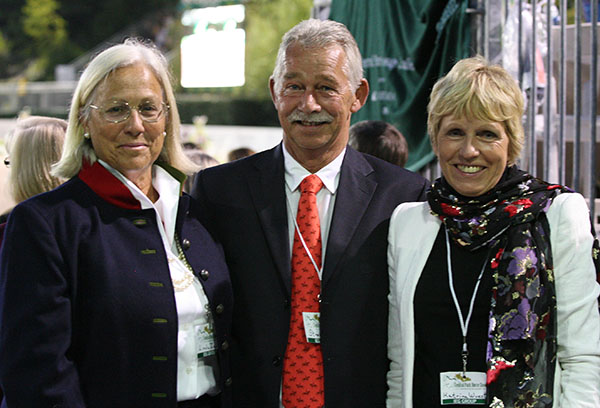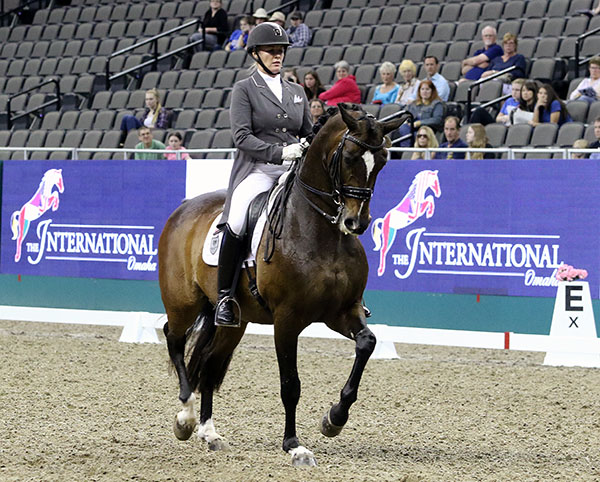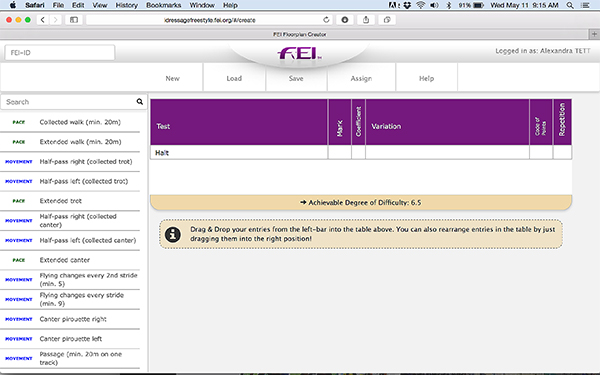Revolutionary Freestyle Judging System Successful at Omaha Launch, European World Cups Next–Part 1 of 2
9 years ago StraightArrow Comments Off on Revolutionary Freestyle Judging System Successful at Omaha Launch, European World Cups Next–Part 1 of 2

By KENNETH J. BRADDICK
OMAHA, Nebraska, May 10, 2016–A revolution in the creation of musical freestyles that takes away judges’ guessing the difficulty of performances and gives riders a chance to show off their best won support from both competitors and judges in its premiere here that will see it expanded to the coming winter’s European World Cup events leading to the Final in Omaha in 2017.
With the new system requiring riders to submit the choreography of their freestyle in advance it opens up the possibility for the first time of live commentary of the kind in ice skating and gymnastics to build a whole new level of anticipation and excitement that has not existed in dressage.
And the speed of the computerized program to calculate results gives spectators complete scores–technical and creative–before horse and rider have left the arena, including fans in the excitement and tension of competition instead of being left behind as occurs now when they wait several minutes for scores and don’t have a chance to react in the heat of the contest.
Another benefit is that the process shaves at least a minute maybe one minute and a half from the time required from the start of a Freestyle until the technical and creative test sheets are manually completed and checked. Along with paperless judging that was introduced at the Adequan Global Dressage Festival in Wellington, Florida last winter it’s seen by show organizers as an important step to involve fans at the show or watching elsewhere rather than losing them with delays in results and too much time between rides.

Two years of collaboration between German 5* judge Katrina Wüst and Daniel Göhlen, a software developer from Munich, Germany, has produced a breakthrough in transparency and more easily understood standardization of marks for movements that have degrees of difficulty.
Modern dressage musical freestyles begun in the 1980s led to creation of the first World Cup Final–an annual world championship–in 1986 and were added to the Olympic program at Atlanta in 1996. Separate marks are awarded for technical aspects such as quality of gaits and performance of movements in the same manner as the Grand Prix and Special and artistic aspects that are more subjective, how well the music fits the performance, for example, while giving the rider the freedom to show off more complex and demanding movements.
A movement with a high degree of difficulty performed well can earn extra points. In some cases, though, such as the freestyle by Charlotte Dujardin and Valegro does not contain a high degree of difficulty but is so well performed that it receives extraordinarily high scores.
Gary Rockwell, one of only four American 5* judges–the highest level and eligible to judge at Olympics–and who was part of one of three tests of the system in Europe last year, described the new system this way:
“One of the disadvantages is that a rider has an opportunity to plan whatever they want for their freestyle but if they do not follow the floor plan they will get a low score.”
But, he said, “the best thing is it gives the rider a catalog of degrees of difficulty they’ve never had before. In a CDI5*, for example, what was difficult could not always be determined, one judge could decide a movement should have a degree of difficulty while another judge thought there was no degree of difficulty..
“Now it’s all cataloged; it’s not up to the judges to decide. I think that’s the best part.
“The riders know where they can pick up points.
“It’s been very well thought through. I think everything that can be covered has been covered.”
A detailed description of the new system is availableDressage Freestyle Creator-Manual.

The system requires riders to use an ID and password provided by their national federation to log on to the FEI Internet database.
With the choreography of their Freestyle, the rider drags and drops the Freestyle movements to a second column in the order in which they are performed. The program automatically assigns a degree of difficulty to the movements that are cataloged in the database as such.
The program automatically assigns the degree of difficulty.
The Freestyles of competitors are pre-loaded into computers used by e-scribes seated next to each judge.
Briefings for judges and the scribes ahead of competitions explain in detail differences between assignment of marks.
Once the marks are entered–they can be changed by the judge as can occur now before the completion button is pressed–the program automatically calculates the mark for the individual movements that have a degree of difficulty.

Karen Pavicic, who won the Omaha CDI4* Grand Prix Freestyle on her 2014 Canadian World Games team mount Don Daiquiri, went over her score sheets in detail with Daniel Göhlen after the event.
She liked the change in preparation required by the program, saying it gave riders the chance to perform movements with a degree of difficulty that played to their strengths while not displaying weaker aspects.
Jacqueline Brooks, who on D Niro that she competed for Canada at the 2012 Olympics as well as the 2013 World Cup Final performs her “Hallelujah” freestyle popular throughout North America as well as in Europe is experienced in creating freestyles.
“I keep my attention on good pure freestyle and not obsessing about the degree of difficulty,” she said. .
“This new format gives me the opportunity to compose an ideal pattern, do the math and see where we go from there. The question I have to address is how it affects the way I design freestyles–another element to the math of design.
“I think it aligns us a bit more with figure skating. Commentators will know the pattern and have that ability to generate excitement when we have live streaming. It will also keep us more honest about our design and execution.”
Detailed reactions from judges, riders and others will be sent to the FEI to tweak the system.
Part 2: What software from Daniel Göhlen, who worked with FEI 5* judge Katrina Wüst on the new Freestyle computer program, can do for dressage.

